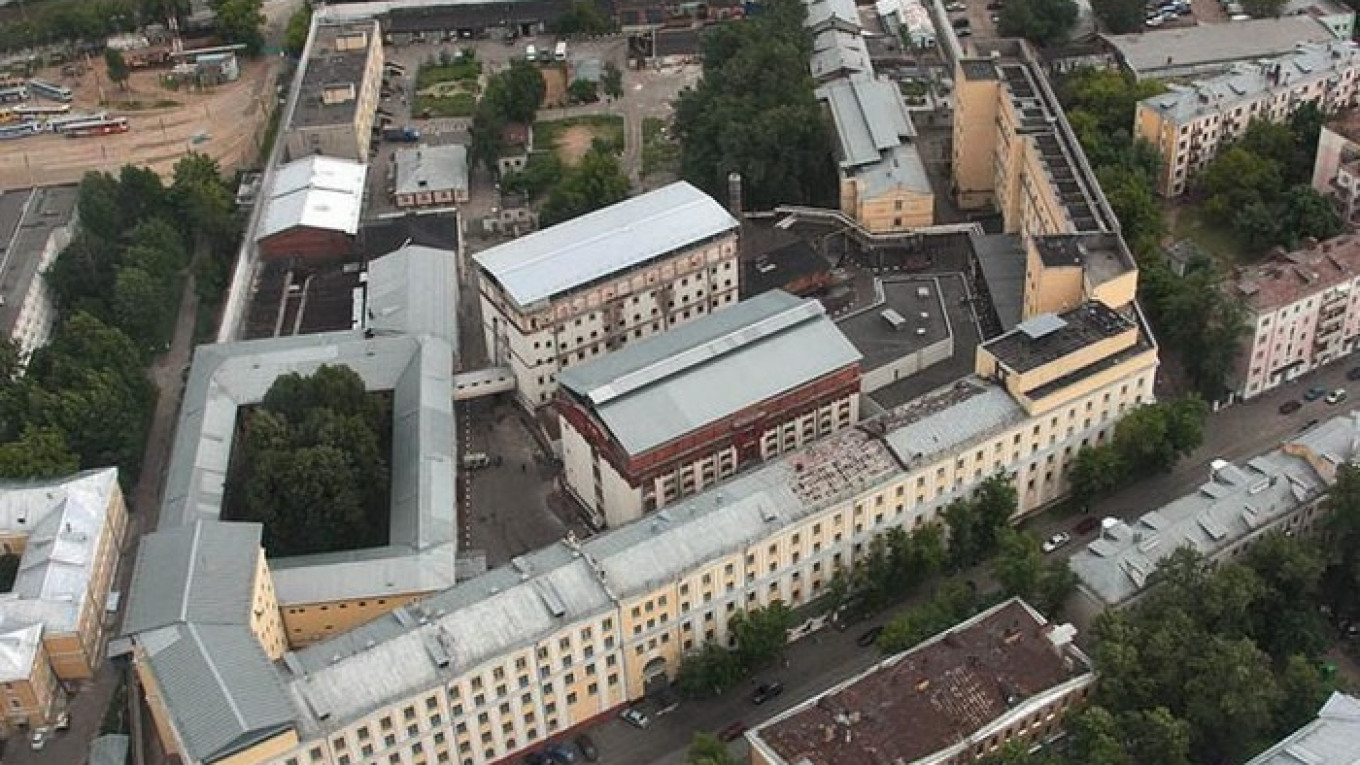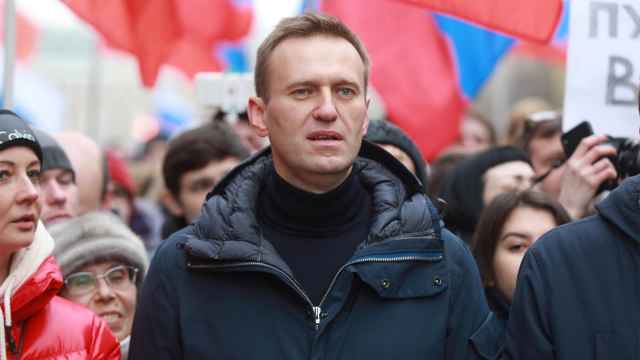There was a tragically surreal dimension to the Russian authorities labeling Alexei Navalny an ‘escape risk’ as he sat inside Matrosskaya Tishina’s high walls, but it also suggests something about their likely strategy in dealing with the “Berlin patient.”
Considering that Navalny opted not to request (and no doubt receive) asylum in the West but voluntarily returned to Russia — and the inevitability of arrest and imprisonment — then the notion that he did so precisely with an eye to escape is so illogical to be Kafkaesque.
Navalny himself wrote on Instagram that “Earlier, I was taken around not just in a convoy, but also accompanied by commandos in helmets and with machine guns. Now I will probably be in shackles.”
Escaping from the Sailor
It is especially striking that FSIN, the Federal Penitentiary Service, considered him such a risk even while he was in one of the most secure of all Russia’s urban prisons.
Matrosskaya Tishina — “Sailor’s Silence” or “Sailor’s Rest,” or more formally Federal State Institution Investigative Isolator SIZO-1 of the Moscow City FSIN — is an unassuming but solid yellow complex out in Moscow’s Sokolniki neighbourhood. It has been a prison since 1870, though, and only three people ever managed to escape, two of whom were recaptured within 24 hours.
In 2013, Oleg Topalov, facing trial on double murder charges, managed to dig a hole in the ceiling of his top-floor cell with nothing but a metal spoon. Once out on the roof, he was able to make it over the razor-wire of the perimeter fence thanks to the climbing gear he had procured via a corrupt guard. Still, he was arrested next day in Izmailovsky Park.
In 2004, drug addict Sergei Ershov managed to scrape away crumbling mortar and pull out just enough bricks from the wall of the isolation ward to wriggle through. He managed to crash through the outer fence, but was seriously injured and was quickly caught.
In 1995, the notorious former soldier and OMON riot policeman turned hitman Alexander Solonik — known as “the Macedonian” and “Superkiller” — managed to escape with the assistance of one of the warders, who fled with him, having been paid a reported half a million dollars. Solonik later turned up in Greece; the guard later turned up dead.
This hardly sounds as if it would offer Navalny much scope for escape, even were he minded to try carving his way out with some convenient cutlery.
However, the odds are even less in his favor, because he is actually being held in a prison within a prison, a specialized federal-level detention facility called SIZO-1 of the Russian (not Moscow) FSIN or, more colloquially, “Kremlin Central.”
Established by the KGB back in 1985 for individuals arrested in connection with the most serious corruption cases, it was a place where even powerful figures could be kept safely, without the risk of their escaping, conspiring, or being silenced. After the collapse of the Soviet Union, it continued to be under the security services, until the FSB formally surrendered it to FSIN around 2006.
Even so, SIZO-1, which occupies Matrosskaya Tishina’s Building 9, is generally assumed still to be controlled by the FSB, even if the guards and administrators draw their pay from FSIN.
There are advantages to being one of the hundred or so inmates in SIZO-1, rather than the regular prison. As befits the high profile of many of them, from erstwhile richest man in Russia Mikhail Khodorkovsky to former Economy Minister Aleksei Ulyukaev, cells are larger, with their own TVs, toilets and hot water.
On the other hand, surveillance is constant and detainees kept separate, even during their mandatory hour of exercise on the mesh-enclosed roof. Furthermore, the guards are regarded as an elite: there are generally not the petty examples of bullying and exploitation that are still too common elsewhere in the Russian prison system, but nor the opportunities for minor laxness in executing the rules.
So Navalny is not going anywhere, or at least not until his etap, his prison transport to whichever penal colony in which he will be serving out his next two and a half years.
Strategy of silence
Nonetheless, the decision to label him a spurious flight risk does suggest the Kremlin’s strategy to deal with him.
While detainees in “Kremlin Central” are allowed to receive letters, reportedly of late this has been suspended for “technical reasons.” Navalny has had access to his lawyer and also internet connectivity, subject to the rules of the centre, but in the main is being isolated in every sense.
Aware of his charisma and his considerable skills as a communicator, the Kremlin wants to muzzle him, silence him, disappear him until, it hopes, he is forgotten, a figure of past controversy rather than future relevance.
Hence also the choice of charges laid against him. Not the grandeur of a treason trial — though they could have manufactured one had they so chosen — but first embezzlement and then defaming a 95-year-old Great Patriotic War veteran. The message is that this man may play the role of the dissident, but he is actually corrupt in every sense: a Western hireling, a thief, and a boor.
And another fraud case connected with his Anti-Corruption Foundation (FBK) is looming, with the prospect that it could add as many as ten more years to his sentence.
But while Navalny is essentially under control while in “Kremlin Central,” what happens when he is out in a regular colony, where the guards are not necessarily quite so disciplined, where illegal cellphones are a commodity, and where he will be interacting with regular prisoners?
Of course, all kinds of special measures may be applied. When 23-year-old Ruslan Shaveddinov, a project manager at FBK, was forcibly conscripted in 2019, he was sent to an air defence base on the indecently remote Novaya Zemlya archipelago in the Arctic Ocean. Even so, the military authorities went to great lengths to keep him isolated, intercepting mail and cutting cellular connections.
Applying these in a penal colony is problematic, though, given that it is harder to focus such measures just on Navalny. Widespread limitations on visits and communications are, after all, the kind of things which cause prison riots.
He could theoretically be sent (for “his safety”?) to one of Russia’s maximum-security prisons such as Black Dolphin in Orenburg region (IK-6), Black Eagle in Sverdlovsk (IK-56) or White Swan in Perm (OIK-2). These are, however, generally reserved for terrorists, multiple murderers and the like. Sending Navalny to such a facility would in itself be an admission of fear as to what he could accomplish in normal prison conditions.
Here, then, is the final irony. The Kremlin hopes it can bury Navalny in the prison system while it blackens his name and grinds away at his movement.
To do that, it has to do two things: it has to keep him muzzled, but it also had to keep him alive. At the best of times, Russian prisons are dangerous and unpleasant places, stalked by violence and drug-resistant TB alike. Given that no one, at home or abroad, would believe the Kremlin wasn’t responsible if anything happens to him, it has a perverse incentive to look after him, even as it tries to destroy him.
A Message from The Moscow Times:
Dear readers,
We are facing unprecedented challenges. Russia's Prosecutor General's Office has designated The Moscow Times as an "undesirable" organization, criminalizing our work and putting our staff at risk of prosecution. This follows our earlier unjust labeling as a "foreign agent."
These actions are direct attempts to silence independent journalism in Russia. The authorities claim our work "discredits the decisions of the Russian leadership." We see things differently: we strive to provide accurate, unbiased reporting on Russia.
We, the journalists of The Moscow Times, refuse to be silenced. But to continue our work, we need your help.
Your support, no matter how small, makes a world of difference. If you can, please support us monthly starting from just $2. It's quick to set up, and every contribution makes a significant impact.
By supporting The Moscow Times, you're defending open, independent journalism in the face of repression. Thank you for standing with us.
Remind me later.








